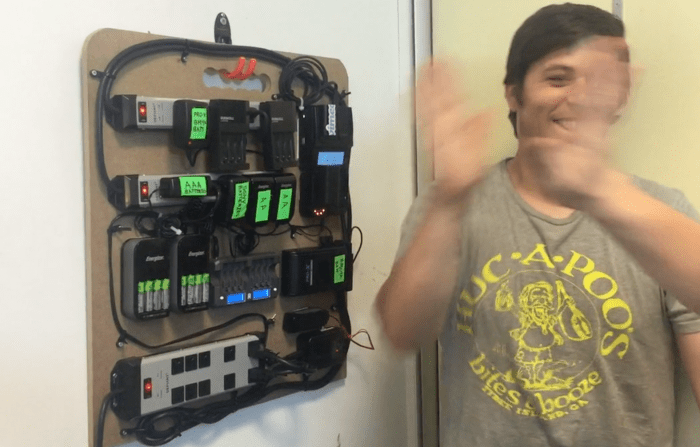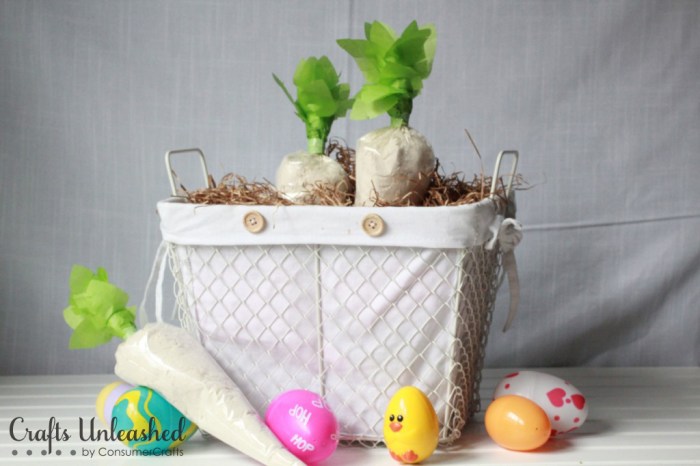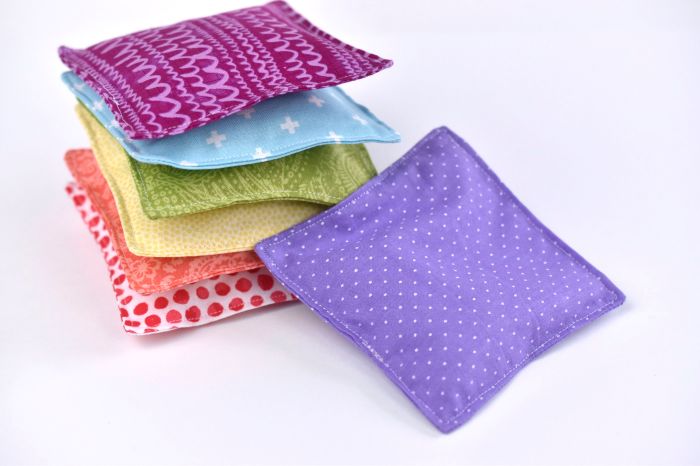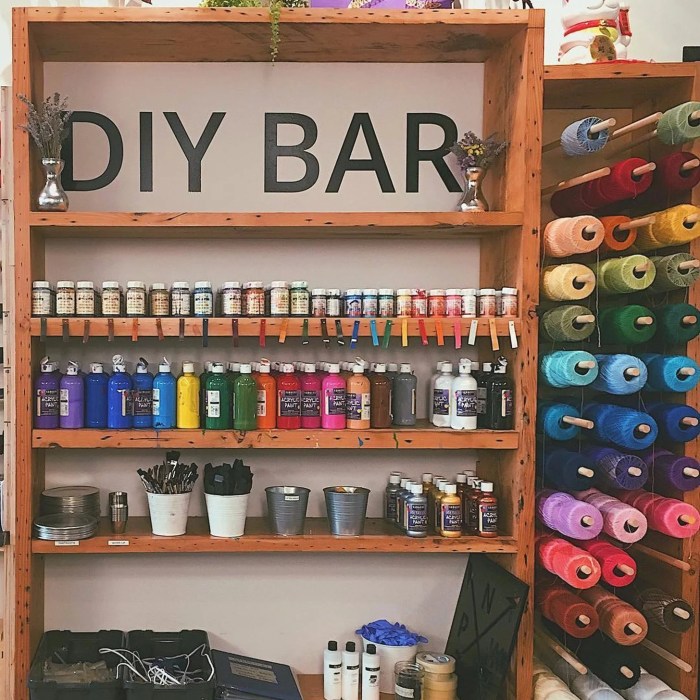DIY letterpress, a craft that combines artistry and tactile experience, has captured the hearts of many. This hands-on printing technique allows you to create unique and personalized pieces, from elegant stationery to captivating art prints. The allure of letterpress lies in its ability to transform ordinary paper into something extraordinary, leaving a lasting impression on both the creator and the recipient.
Letterpress printing, a traditional method that dates back centuries, involves using raised type or images to create impressions on paper. This process results in a distinctive tactile texture and a timeless aesthetic that sets it apart from modern printing techniques. Whether you’re a seasoned artist or a curious beginner, DIY letterpress offers a rewarding and fulfilling creative outlet.
The Allure of DIY Letterpress
The art of letterpress printing has experienced a resurgence in recent years, with many individuals embracing the DIY approach to create unique and personalized projects. This hands-on craft offers a blend of artistic expression, tactile satisfaction, and the charm of vintage printing techniques.
The Appeal of DIY Letterpress
The growing popularity of DIY letterpress can be attributed to several factors. The ability to create personalized stationery, invitations, and other printed materials appeals to individuals seeking unique and handcrafted items. Letterpress printing offers a distinct tactile experience, with the raised lettering adding a unique texture and depth to printed pieces. The process itself is considered therapeutic and engaging, allowing individuals to connect with traditional printing methods.
Understanding Letterpress Basics
Letterpress printing is a unique and captivating technique that uses raised surfaces to create impressions on paper. It involves the meticulous process of setting type, inking the raised surfaces, and pressing them onto paper, resulting in a tactile and visually stunning print.
The Core Principles of Letterpress Printing
Letterpress printing is built on the fundamental principle of using raised surfaces to transfer ink to paper. This process involves three key steps:
- Setting Type: In traditional letterpress, individual letters and punctuation marks are assembled by hand in a process called typesetting. These pieces, known as “type,” are arranged in a frame called a “chase” to form lines and blocks of text.
- Inking: Once the type is set, it is inked using a roller or brush. The ink is applied evenly to the raised surfaces of the type, ensuring a clean and consistent print.
- Pressing: The inked type is then pressed onto paper using a heavy, flat surface called a “platten.” The pressure of the platten forces the ink from the raised surfaces of the type onto the paper, creating a distinct and raised impression.
Essential Tools and Materials
To embark on a letterpress journey, you’ll need a collection of essential tools and materials. These include:
- Letterpress Printing Press: The heart of letterpress printing, the press provides the necessary force to transfer ink from the type to paper. Letterpress presses come in various sizes and configurations, ranging from small, hand-cranked models to larger, motorized machines.
- Type: The foundation of letterpress printing, type is available in a wide array of fonts, sizes, and styles. Traditional type is made of metal, but modern alternatives include polymer and wood.
- Chase: A metal frame that holds the type in place during printing. Chases are available in various sizes to accommodate different print projects.
- Inking Roller: A roller used to apply ink evenly to the type. Inking rollers are typically made of rubber or synthetic materials.
- Paper: The surface onto which the ink is transferred. Letterpress printing works best with thick, textured papers that can handle the pressure of the press.
- Ink: The medium that transfers the image from the type to the paper. Letterpress inks are typically oil-based and come in a wide range of colors.
A Step-by-Step Guide for Beginners, Diy letterpress
Letterpress printing can seem daunting at first, but with a little patience and practice, you can master the basics. Here’s a step-by-step guide to get you started:
- Choose a Design: Begin by selecting a design for your print project. Keep it simple and focus on clear lines and bold typography.
- Set the Type: Use a typesetting tool or software to create your design and then arrange the type in a chase. Ensure that the type is securely held in place.
- Ink the Type: Apply a thin, even layer of ink to the type using a roller or brush. Avoid over-inking, as this can lead to smudging.
- Position the Paper: Place a sheet of paper on the platten of the press, ensuring that it is centered and aligned with the type.
- Print: Engage the press to transfer the ink from the type to the paper. Apply a moderate amount of pressure to create a crisp and defined impression.
- Clean Up: Once you have printed your design, clean the type and press thoroughly to remove any ink residue.
Choosing Your Letterpress Equipment
Once you’ve fallen in love with the tactile charm of letterpress, the next step is choosing the right equipment. This decision is crucial, as it will influence your printing capabilities, budget, and overall letterpress journey.
The world of letterpress presses is diverse, offering a range of options from small, affordable models to large, industrial-grade machines. Understanding the different types of presses available and their characteristics will help you make an informed decision.
Types of Letterpress Presses
The letterpress press market offers a variety of choices, each with its own set of features and capabilities. Understanding these differences is essential for selecting the press that aligns with your needs and budget.
- Hand-Crank Presses: These presses are operated manually using a crank handle. They are generally smaller and more affordable than their electric counterparts, making them a popular choice for hobbyists and small-scale printmakers. Hand-crank presses offer a more intimate printing experience and provide excellent control over pressure and printing depth.
- Electric Presses: Electric presses are powered by a motor, eliminating the need for manual cranking. They offer greater speed and efficiency, making them ideal for larger production runs. Electric presses come in various sizes and configurations, catering to different printing needs and budgets.
- Platen Presses: Platen presses use a flat, rectangular platen to press the type against the paper. They are known for their versatility and ability to print a wide range of materials, including cardstock, paper, and even fabric. Platen presses are widely used for business cards, invitations, and other stationery.
- Cylinder Presses: Cylinder presses use a rotating cylinder to apply pressure to the type. They are typically larger and more powerful than platen presses, making them suitable for high-volume printing projects. Cylinder presses are often used for book printing, posters, and other large-format projects.
- Proofing Presses: Proofing presses are smaller and simpler versions of letterpress presses. They are designed for testing type and ink combinations before printing on a larger scale. Proofing presses are an excellent tool for experimenting with different printing techniques and materials.
Factors to Consider When Choosing a Letterpress Press
Selecting the right letterpress press involves considering several factors that influence your printing capabilities, budget, and overall experience.
- Budget: Letterpress presses come in a wide range of prices, from a few hundred dollars for a hand-crank press to tens of thousands of dollars for an industrial-grade cylinder press. Consider your budget and allocate funds for the press, accessories, and any necessary repairs or maintenance.
- Printing Needs: Assess the types of projects you plan to print. If you’re primarily interested in small-scale projects, a hand-crank press might suffice. For larger projects or production runs, an electric or cylinder press may be more suitable.
- Space: Letterpress presses can take up a significant amount of space. Consider the available space in your studio or workshop and choose a press that fits comfortably.
- Ease of Use: Some presses are easier to operate than others. If you’re new to letterpress printing, consider a press with a user-friendly design and clear instructions.
- Durability: A letterpress press is an investment. Choose a press made from high-quality materials and known for its durability.
Advantages and Disadvantages of Different Press Options
Each type of letterpress press comes with its own set of advantages and disadvantages. Weighing these factors can help you make an informed decision.
DIY letterpress is a rewarding hobby, offering a tangible connection to the past. The process involves using a printing press and hand-set type to create unique prints, much like the early days of printing. While crafting these beautiful pieces, it’s fascinating to consider the advancements in modern medicine, such as the development of GLP-1 drugs , which have revolutionized diabetes management.
Returning to the tactile world of letterpress, the craft allows for creative expression and a sense of accomplishment, offering a peaceful escape from the complexities of modern life.
| Press Type | Advantages | Disadvantages |
|---|---|---|
| Hand-Crank Presses | Affordable, compact, provides precise control over pressure | Slower printing speed, requires physical effort |
| Electric Presses | Faster printing speed, less physical effort, more versatile | More expensive, can be bulky, requires electricity |
| Platen Presses | Versatile, can print a wide range of materials, good for small-scale projects | Limited printing area, may require adjustments for different paper thicknesses |
| Cylinder Presses | High-volume printing capabilities, suitable for large-format projects | Expensive, bulky, requires specialized skills to operate |
| Proofing Presses | Affordable, compact, ideal for testing type and ink combinations | Limited printing area, not suitable for production runs |
Crafting Your Letterpress Designs
Letterpress design is all about creating visually stunning and tactile pieces that leave a lasting impression. By combining artistic vision with the unique capabilities of letterpress printing, you can elevate your projects to a whole new level.
Choosing Fonts and Images
The choice of fonts and images is crucial in letterpress design. High-quality fonts and images are essential for creating a professional and impactful design.
- Fonts: Select fonts that are legible and complement the overall design aesthetic. Consider the weight, style, and character of the font. For example, a classic serif font like Garamond might be suitable for a vintage-inspired design, while a modern sans-serif font like Helvetica might be better suited for a minimalist aesthetic.
- Images: Use high-resolution images that are sharp and detailed. Ensure the image is appropriate for the printing process, as some images may not reproduce well on letterpress. For example, an image with fine lines or gradients might not translate well to the raised ink effect of letterpress.
Creating Eye-Catching Designs
Letterpress designs are all about creating a visual and tactile experience. Here are some tips for designing eye-catching letterpress projects:
- Use Negative Space: Negative space, or the area around the design elements, is just as important as the elements themselves. It helps to create visual balance and emphasize the design.
- Experiment with Colors: Letterpress printing can accommodate a wide range of colors. Don’t be afraid to experiment with different color combinations to create a visually appealing design.
- Incorporate Textures: Letterpress printing allows you to add textures to your designs, creating a unique and tactile experience. You can use different types of paper or even add textured elements to the design itself.
- Think About the Paper: The paper you choose can have a significant impact on the overall look and feel of your design. Consider the weight, texture, and color of the paper. For example, a thick, textured paper might be appropriate for a luxurious design, while a thinner, smooth paper might be better suited for a minimalist design.
Examples of Unique Letterpress Designs
Letterpress printing can be used for a wide range of projects, from invitations and stationery to business cards and posters. Here are some examples of unique and creative letterpress designs:
- Wedding Invitations: Letterpress wedding invitations are a classic and elegant choice. The raised ink adds a touch of luxury and sophistication.
- Stationery: Letterpress stationery can be used for personal or business correspondence. It’s a great way to make a statement and add a touch of class to your communications.
- Business Cards: Letterpress business cards are a great way to make a lasting impression. The raised ink adds a touch of professionalism and makes your card stand out from the rest.
- Posters: Letterpress posters are a unique and eye-catching way to promote an event or product. The raised ink adds depth and dimension to the design.
Letterpress for Beginners: Diy Letterpress
Embarking on your letterpress journey can be exciting, but it can also feel overwhelming. This step-by-step guide will equip you with the knowledge and skills to create beautiful letterpress projects from the comfort of your home.
Gathering Your Supplies
Before you begin, you’ll need to gather the essential supplies for your letterpress project. These include:
- Letterpress Printing Press: The heart of your letterpress setup. Choose a press that suits your budget and project needs, from smaller manual presses to larger, more powerful models.
- Letterpress Plates: These are made of metal or polymer and are engraved with your design. You can create your own plates using etching techniques or purchase pre-made plates online.
- Paper: Choose a paper that is thick enough to handle the pressure of the press and complements your design. Textured papers, such as cotton or linen, can add a unique touch.
- Ink: Letterpress ink is specifically formulated for printing on paper. It comes in a variety of colors and finishes, including gloss, matte, and metallic.
- Roller: A roller is used to apply ink evenly to the letterpress plate. Choose a roller with a soft, durable material that won’t damage the plate.
- Brayer: A brayer is a hand-held tool used to spread ink on the roller.
- Cutting Mat: Protect your work surface and provide a stable base for cutting and trimming your paper.
- Scissors or Paper Trimmer: For cutting and trimming your paper to the desired size.
- Ruler: For measuring and aligning your paper and plates.
- Gloves: Protect your hands from ink stains.
Designing Your Letterpress Project
Now that you have your supplies, it’s time to design your letterpress project.
- Choose a Theme: Start with a theme that inspires you. It could be a personal message, a special occasion, or a design that reflects your style.
- Select a Font: Opt for a font that complements your theme and looks appealing when printed in letterpress. Serif fonts, known for their elegant flourishes, are often a popular choice.
- Create a Layout: Arrange your text and images in a way that is visually appealing and balanced. Use a design software program, such as Adobe Illustrator or Photoshop, to create your design.
- Consider Color Combinations: Choose a color scheme that complements your design and creates a desired mood. Use color swatches to experiment with different combinations.
Preparing Your Letterpress Plate
Once you have your design finalized, it’s time to prepare your letterpress plate.
- Transfer Your Design: Transfer your design to the letterpress plate using a laser engraver, etching technique, or by purchasing pre-made plates.
- Clean the Plate: Ensure the plate is clean and free of debris to prevent ink from smearing.
- Apply Ink: Use a roller to apply ink evenly to the plate, covering all the raised areas of your design.
Printing Your Letterpress Project
Now, you’re ready to print your letterpress project.
- Set Up Your Press: Adjust the pressure of your press based on the thickness of your paper and the depth of your engraving.
- Position the Paper: Align your paper carefully on the press bed, ensuring it is centered and straight.
- Print Your Project: Slowly lower the press handle, applying pressure to the plate and paper. This will transfer the inked design onto the paper.
- Repeat for Multiple Prints: Repeat the printing process for as many prints as you need.
Finishing Touches
After printing, you can add finishing touches to your letterpress project.
- Trim Your Paper: Trim your paper to the desired size using scissors or a paper trimmer.
- Add Embellishments: You can add embellishments such as ribbons, glitter, or other decorative elements to enhance your project.
- Mount Your Prints: Mount your prints on a mat board or frame them to display your work.
Resources and Tutorials
There are numerous resources and tutorials available to help you learn more about letterpress printing.
- Online Communities: Join online communities and forums dedicated to letterpress printing to connect with other enthusiasts and share tips.
- YouTube Channels: Explore YouTube channels featuring letterpress tutorials and demonstrations.
- Letterpress Workshops: Participate in letterpress workshops to learn from experienced letterpress printers and gain hands-on experience.
- Books and Articles: Read books and articles about letterpress printing to deepen your understanding of the craft.
Letterpress and Sustainability
Letterpress printing, with its rich history and tactile appeal, is increasingly recognized for its environmental friendliness. Unlike many modern printing methods that rely on harsh chemicals and energy-intensive processes, letterpress offers a more sustainable approach. This section explores the eco-friendly aspects of letterpress, highlighting the use of sustainable materials and practices, and provides tips for minimizing your environmental impact in letterpress projects.
Sustainable Materials
Sustainable materials play a crucial role in minimizing the environmental footprint of letterpress printing. The use of recycled paper and vegetable-based inks are key elements in promoting a greener printing process.
- Recycled Paper: Choosing recycled paper reduces the demand for virgin pulp, which minimizes deforestation and water consumption. Recycled paper is often made from post-consumer waste, further reducing waste and promoting a circular economy.
- Vegetable-Based Inks: Traditional letterpress inks are often oil-based, but there is a growing trend towards using vegetable-based inks. These inks are made from natural ingredients like soy, sunflower, or linseed oil, which are biodegradable and less toxic than their oil-based counterparts. Vegetable-based inks also tend to have a lower VOC (volatile organic compound) content, contributing to improved air quality.
Sustainable Practices
Beyond the materials used, letterpress printing itself encourages sustainable practices. The process emphasizes efficiency and minimal waste, aligning with the principles of a circular economy.
- Minimal Waste: Letterpress printing involves precise and controlled ink application, resulting in less waste compared to other printing methods. The process allows for precise ink placement, minimizing over-inking and wasted materials.
- Durability and Longevity: Letterpress prints are known for their durability and longevity. The raised ink creates a tactile impression that resists fading and wear, extending the lifespan of the printed piece and reducing the need for reprints.
Minimizing Environmental Impact
While letterpress is inherently sustainable, there are additional steps you can take to minimize your environmental impact in your projects.
- Reduce Paper Consumption: Consider designing projects with efficient layouts and minimizing the use of unnecessary paper. Explore options like double-sided printing or using smaller paper sizes to reduce paper consumption.
- Choose Local Suppliers: Supporting local suppliers for your paper and inks reduces transportation emissions and promotes local economies. Local suppliers often offer more sustainable options and can provide personalized advice on environmentally friendly practices.
- Recycle and Reuse: After your project is complete, make sure to recycle or reuse leftover materials. Paper scraps can be used for other creative projects, and leftover inks can be disposed of responsibly. Many ink manufacturers offer recycling programs for their products.
The Future of DIY Letterpress
The world of DIY letterpress is a dynamic one, constantly evolving with the influence of technology and shifting creative trends. As we look towards the future, we can anticipate exciting developments that will continue to shape the landscape of this beloved craft.
The Impact of Technology and Innovation
Technology has always played a significant role in letterpress, and its influence is only set to grow in the future. This is evident in the increasing availability of affordable, user-friendly letterpress equipment, such as smaller presses and digital plate-making systems. These advancements make it easier than ever for individuals to explore the world of letterpress printing, opening up the craft to a wider audience.
- Automated Plate-Making: The rise of digital plate-making technologies, such as laser etching and digital engraving, is streamlining the plate-making process, reducing the need for traditional hand-engraving methods. This not only saves time but also allows for greater precision and detail in designs.
- 3D Printing for Letterpress: 3D printing is revolutionizing the creation of letterpress blocks and dies. With 3D printing, designers can create custom shapes and intricate designs with ease, pushing the boundaries of what is possible in letterpress.
- Online Design Platforms: The emergence of online design platforms and tools specifically tailored for letterpress is empowering both beginners and seasoned designers. These platforms offer intuitive interfaces and pre-designed templates, making it easier to create professional-quality letterpress projects.
As you delve into the world of DIY letterpress, you’ll discover a rich history, a vibrant community, and endless possibilities for creativity. From crafting personalized invitations and greeting cards to designing unique packaging and artistic prints, the applications of letterpress are as diverse as your imagination. So, embrace the tactile experience, experiment with different techniques, and let your creativity flourish as you bring your letterpress visions to life.





